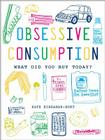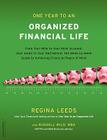 The Big Short: Inside the Doomsday Machine by Michael Lewis
The Big Short: Inside the Doomsday Machine by Michael LewisAn amazingly entertaining, often funny and always horrifying story of what went wrong on Wall Street and why.
What Lewis writes of two of his characters, young Ledley and Mai, might just as well apply to Lewis himself, or to us: They "had always sort of assumed that there was some grown-up in charge of the financial system whom they had never met; now they saw there was not."
When the crash of the U. S. stock market became public knowledge in the fall of 2008, it was already old news. The real crash, the silent crash, had taken place over the previous year, in bizarre feeder markets where the sun doesn't shine, and the SEC doesn't dare, or bother, to tread: the bond and real estate derivative markets where geeks invent impenetrable securities to profit from the misery of lower- and middle-class Americans who can't pay their debts. The smart people who understood what was or might be happening were paralyzed by hope and fear; in any case, they weren't talking. The crucial question is this: Who understood the risk inherent in the assumption of ever-rising real estate prices, a risk compounded daily by the creation of those arcane, artificial securities loosely based on piles of doubtful mortgages? Michael Lewis turns the inquiry on its head to create a fresh, character-driven narrative brimming with indignation and dark humor, a fitting sequel to his #1 best-selling Liar's Poker. Who got it right? he asks. Who saw the real estate market for the black hole it would become, and eventually made billions of dollars from that perception? And what qualities of character made those few persist when their peers and colleagues dismissed them as Chicken Littles? Out of this handful of unlikely-really unlikely-heroes, Lewis fashions a story as compelling and unusual as any of his earlier bestsellers, proving yet again that he is the finest and funniest chronicler of our times.
 Too Big to Fail by Andrew Ross Sorkin
Too Big to Fail by Andrew Ross SorkinAn inside look at the really big players. A gripping narrative of how the men and women in the headlines responded to the financial meltdown. Detailed, moment by moment account of one of the most calamitous times in our history.
A real-life thriller about the most tumultuous period in America's financial history by an acclaimed New York Times Reporter
Andrew Ross Sorkin delivers the first true behind-the-scenes, moment-by-moment account of how the greatest financial crisis since the Great Depression developed into a global tsunami. From inside the corner office at Lehman Brothers to secret meetings in South Korea, and the corridors of Washington, Too Big to Fail is the definitive story of the most powerful men and women in finance and politics grappling with success and failure, ego and greed, and, ultimately, the fate of the world's economy. "We've got to get some foam down on the runway!" a sleepless Timothy Geithner, the then-president of the Federal Reserve of New York, would tell Henry M. Paulson, the Treasury secretary, about the catastrophic crash the world's financial system would experience.
Through unprecedented access to the players involved, Too Big to Fail re-creates all the drama and turmoil, revealing neverdisclosed details and elucidating how decisions made on Wall Street over the past decade sowed the seeds of the debacle. This true story is not just a look at banks that were "too big to fail," it is a real-life thriller with a cast of bold-faced names who themselves thought they were too big to fail.
 13 Bankers: The Wall Street Takeover and the Next Financial Meltdown
13 Bankers: The Wall Street Takeover and the Next Financial Meltdownby James Kwak and Simon Johnson
The authors argue that breaking up the oligarchy of the megabanks that control 60% of our GDP is essential to avoiding another financial meltdown. They hold the global economy hostage. An account of our financial history with issues that date back to Thomas Jefferson.
Even after the ruinous financial crisis of 2008, America is still beset by the depredations of an oligarchy that is now bigger, more profitable, and more resistant to regulation than ever. Anchored by six megabanks—Bank of America, JPMorgan Chase, Citigroup, Wells Fargo, Goldman Sachs, and Morgan Stanley—which together control assets amounting, astonishingly, to more than 60 percent of the country’s gross domestic product, these financial institutions (now more emphatically “too big to fail”) continue to hold the global economy hostage, threatening yet another financial meltdown with their excessive risk-taking and toxic “business as usual” practices. How did this come to be—and what is to be done? These are the central concerns of 13 Bankers, a brilliant, historically informed account of our troubled political economy.
In 13 Bankers, Simon Johnson—one of the most prominent and frequently cited economists in America (former chief economist of the International Monetary Fund, Professor of Entrepreneurship at MIT, and author of the controversial “The Quiet Coup” in The Atlantic)—and James Kwak give a wide-ranging, meticulous, and bracing account of recent U.S. financial history within the context of previous showdowns between American democracy and Big Finance: from Thomas Jefferson to Andrew Jackson, from Theodore Roosevelt to Franklin Delano Roosevelt. They convincingly show why our future is imperiled by the ideology of finance (finance is good, unregulated finance is better, unfettered finance run amok is best) and by Wall Street’s political control of government policy pertaining to it.
As the authors insist, the choice that America faces is stark: whether Washington will accede to the vested interests of an unbridled financial sector that runs up profits in good years and dumps its losses on taxpayers in lean years, or reform through stringent regulation the banking system as first and foremost an engine of economic growth. To restore health and balance to our economy, Johnson and Kwak make a radical yet feasible and focused proposal: reconfigure the megabanks to be “small enough to fail.”
Lucid, authoritative, crucial for its timeliness, 13 Bankers is certain to be one of the most discussed and debated books of 2010.
 Lords of Finance: The Bankers Who Broke the World
Lords of Finance: The Bankers Who Broke the WorldBy Liaquat Ahamed
The history of the 4 Central Bankers in the US, GB, France and Germany and how the Great Depression was caused by their decisions. A really good history lesson that we should heed. Too much power in too few hands.
The collapse of the world economy was seen as potentially leading to the collapse of
Western Civilization as they knew it.
It is commonly believed that the Great Depression that began in 1929 resulted from a confluence of events beyond any one person's or government's control. In fact, as Liaquat Ahamed reveals, it was the decisions made by a small number of central bankers that were the primary cause of that economic meltdown, the effects of which set the stage for World War II and reverberated for decades. As yet another period of economic turmoil makes headlines today, Lords of Finance is a potent reminder of the enormous impact that the decisions of central bankers can have, their fallibility, and the terrible human consequences that can result when they are wrong.
 The Bag Lady Papers: The Priceless Experience of Losing it All
The Bag Lady Papers: The Priceless Experience of Losing it AllBy Alexandra Penney
Alexandra Penney, an artist and successful magazine editor had a pathological fear of becoming a bag lady and lost all her saving in the Madoff ponzi scheme. She blogged about it for the Daily Beast and hit many nerves, many calling her a spoiled you know what who didn't know what it really meant to lose everything. This is her story.
Inspiring. No, she didn't become a bag lady.
This inspiring, true tale follows the author's journey from financial security to
economic ruin. After investing--and losing--her life savings with Bernie Madoff, Penney, former editor-in-chief of SELF magazine is forced to confront her deepest fears.
 Obsessive Consumption: What Did You Buy Today
Obsessive Consumption: What Did You Buy Todayby Kate Bingaman-Burt
Our daily lives are filled with consumption—$1.50 for a cup of coffee, $5.95 for a magazine, $17.99 for headphones, $1.79 for cough drops, $36.00 for a haircut. Whether bought out of necessity or indulgence, purchased alone or in a group, everything we buy has its own story to tell. We buy art supplies while feeling inspired, CDs while shopping with friends, and a new pair of jeans to give us a lift when we are feeling blue. Yet, these powerfully emotional experiences can be fleeting—quickly erased by the pull of the next 'must-have' acquisition. In Obsessive Consumption, Portland-based artist Kate Bingaman-Burt holds up a mirror to her own obsession with shopping and acquisition. Faced with a mounting pile of postgraduation credit card debt, Bingaman-Burt concocted a unique artistic response to this all-too-common dilemma. She picked up a pen and began drawing her monthly credit card statements, painstakingly recreating every last ledger line and decimal point, vowing to continue serving her artistic penance until her debt was repaid. As a relief from this project—turning the idea of 'retail therapy' on its ear—Bingaman-Burt began drawing one of her purchases from each day, losing herself in the items, patterns, simple lines, and typography.
Obsessive Consumption represents a selection of three years of Bingaman-Burt's delightful ink drawings of sundry items. Accompanied by witty and insightful annotations, these drawings mock her own relationship with her purchases and put a personal face on the mass-produced items of our shared experience. Readers can catch a glimpse into the life of the artist from the collection, which includes wedding bands, a dog, a moving truck, handmade items from friends, Mississippi beer, Portland pizza, and lots of pens and drawing paper to support her drawing habit. A celebration of the beauty of the everyday, Obsessive Consumption presents a microcosm of consumer culture that will appeal to everyone from a thirteen-year-old mall-dweller to a middle-aged anticonsumerism advocate.
One Year to an Organized Financial Life by Regina Leeds, Russell Wild
Do you constantly feel anxious about money? Have unopened credit card statements piled up on your countertop? Are you forever losing receipts for items you meant to return? In an economic downturn taking charge of your financial well-being is more crucial than ever. One Year to an Organized Financial Life is a unique week-by-week plan to make saving money simple, automatic, and stress-free.
For decades, professional organizer Regina Leeds and financial advisor Russell Wild have helped thousands of clients get their lives in order. Using Leeds’s “Zen organizing” approach, which addresses the underlying causes of chaos and replaces them with routines, they now show readers the steps to improving finances within a manageable timeframe. From sticking to a budget to getting out of debt, curbing spending to maximizing retirement savings, One Year to an Organized Financial Life makes it possible for anyone to live more richly on less.

1 comment:
Interesting to see how many books of late have dealt with finance and economics (personal and macro). Debt is off the charts - so maybe people (organizations) will learn from any number of these books
Post a Comment